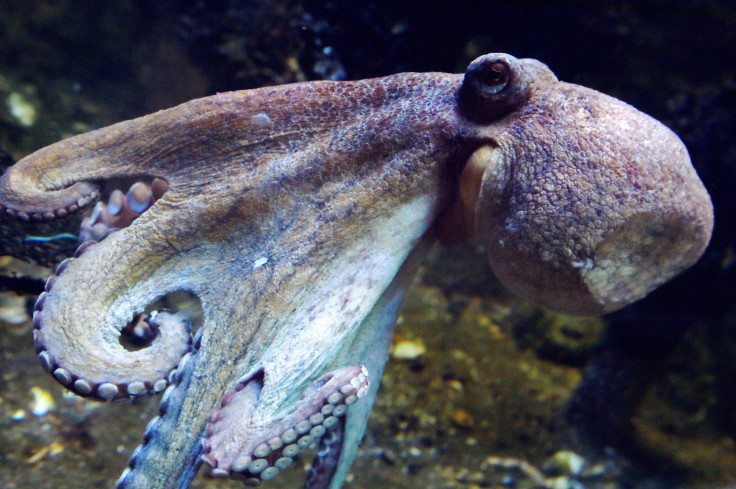New Giant Pacific Octopus Species With Frills Found Accidentally Off Alaska Shore

The Giant Pacific octopus, Enteroctopus dofleini, is a contender for being the largest of all octopus species, but it turns out it is actually at least two distinct species. The GPO has a new cousin which was found accidentally off the coast of Alaska, but it has not been given a scientific name yet.
The new species, tentatively being called frilled giant Pacific octopus by the researchers who found it, was discovered when Nathan Hollenbeck and David Scheel from Alaska Pacific University were looking at shrimp by-catch as part of Hollenbeck’s senior-year thesis. Hollenbeck, an undergraduate student at the university, and Scheel, a professor, saw that some of the octopuses that came up in the bait-pots laid down for shrimp were not GPO.
To catch shrimp, fishing folk in Alaska put power pots with bait into the water and leave them there for a day. Occasionally, octopuses climb into the pots along with the shrimp, often eating much of the shrimp in the pots. The researchers found a total of 21 of the cephalopods, of which six were found to be of an unknown type.
They “were identified by an absence of longitudinal mantle folds, the presence of a lateral mantle frill comprised of a semi-continuous line of broad merged papillae forming a frill or flap along the mid-lateral mantle, the absence of papillae or rugose texture on the ventral mantle below the frill, and two distinctly separated frontal white spots (rather than a single simple or compound spot, or none),” the researchers said on Alaska Octopus Projects website.
In simpler words, GPO doesn’t have a frill along the length of its body, which is the inspiration for the new species' non-scientific name the researchers are using. The GPO also has only one frontal white spot, while the new species has two. And E. dofleini certainly doesn’t have, unlike its frilled cousin, something akin to eyelashes made of raised skin.

To confirm it was actually a new species they had stumbled upon, the researchers also conducted a genetic comparison with E. dofleini and nucleotide sequence data showed they were two different species.
In an interview with Earther, Scheel said: “I’ve been thinking: why would an octopus have a ledge coming off its body like that? Maybe we’re seeing differences in their habitat selection and ecology reflected by differences in their body.”
The GPO can grow up to over 150 pounds (70 kilograms) in weight, but adults are typically about 33 pounds. The largest specimen of the new species seen by the researchers was a female weighing about five pounds only, suggesting all six individuals are juveniles.
More details about the appearance of the new giant Pacific octopus species were published in a paper that appeared online in the November edition of the journal American Malacological Bulletin, under the title “Body Patterns of the Frilled Giant Pacific Octopus, a New Species of Octopus from Prince William Sound, AK.”
Scheel was also involved in another study earlier in 2017 that identified a rare octopus colony. The eight-legged creatures are thought to be extremely solitary, and the settlement off Australia’s east coast was a surprising discovery.
In other recent unusual behavior, over two dozen octopuses were seen emerging from the water for a few nights in a row at a coast in Wales, United Kingdom. No one was sure why they were coming onto land, but some of them were found dead in the morning, probably from being stranded.
© Copyright IBTimes 2024. All rights reserved.





















